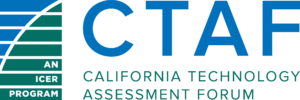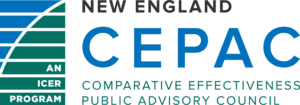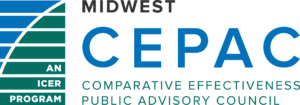Public Meetings
In the United States, consequential decisions around prescription drug pricing and patient access are generally made based on limited evidence and without patients in the room. In confidential negotiations, drugmakers and insurers make financial tradeoffs that seriously affect the health and wealth of all Americans. Drugmakers charge as much as they can, insurers react by restricting care and raising copays, and patients are none the wiser.
Inarguably, this system is broken. One remedy is to bring these pricing and coverage decisions more into the open, where we all can wrestle with how to understand the benefits drugs and other health care services bring to patients and their families, and how we should try to align our spending to make sure we get the most health we can out of the dollars available. The first step has to be guided by patients and patient groups who know the condition, know the diversity of patient experience, and who can bring a truly comprehensive view to the table on what matters most to patients. Only when that input is made central to any assessment of value can we usefully judge the evidence on how well drugs improve the quality and length of patients’ lives. If this input and deliberation on the evidence occurs through clear methods – and in a public forum open to all – only then can we have a more honest discussion about whether the prices set by drugmakers are fair.
“Inarguably, this system is broken. One remedy is to bring these pricing and coverage decisions more into the open, where we all can wrestle with how to understand the benefits drugs and other health care services bring to patients and their families, and how we should try to align our spending to make sure we get the most health we can out of the dollars available”
ICER is striving to create a public process of determining what a “fair” price would be for a new drug – with patients’ perspectives serving as the guiding structure. We take an iterative publishing approach to each of our assessments, reaching out to patient groups even before we announce a topic, and then engaging with them over the entire 8-month review process. Where possible, we have in-person meetings, and through these interactions, phone calls, and emails, we share an ongoing dialogue about what matters to patients and what evidence is available. We invite formal written comments at three distinct times throughout our timeline; patients are also invited to be front and center at our public meetings where an independent appraisal committee deliberates on the strength of the evidence. At the public meeting, patients help the appraisal committee hear first-hand about the true burden of their disease, what health outcomes matter most to them, if a treatment has any benefits and disadvantages that may not have been adequately captured in a clinical trial, and the broader context policymakers should consider when evaluating the fairness of a price.
Our reports are discussed at the public meetings of the CTAF, New England CEPAC, or Midwest CEPAC. They are independent, regional bodies of practicing physicians, methodological experts, and leaders in patient advocacy and engagement that provide objective, independent guidance on the application of medical evidence to clinical practice and payer policy decisions.



Our Public Meetings
Click here to learn more about our next public meeting or read through our public meeting code of conduct.
